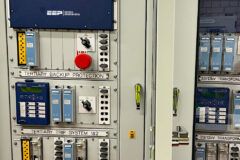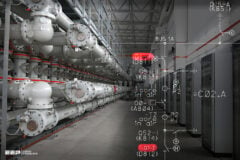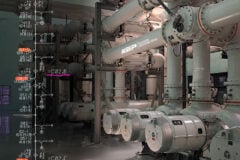Project definition for a start
Before getting into the project engineering phase, power system planning with the focus on basic design aspects of main power system components must be performed. Based on recommendations resulting from various studies, the project engineering phase, mainly covers the design, tendering and contracting/project implementation phases. This technical article tackles the tendering procedure from a technical point of view.

In this technical article the focus is set upon the general procedures and activities during the high-voltage project engineering phase up to contracting/project implementation, after the project has been approved for realization and execution.
The creation of projects in the field of power and energy may be required for various reasons, such as:
- Construction of new substations, overhead transmission lines or power cable systems as a result of power system planning
- Extension of existing power systems due to expansion of the supply areas, increase in power demand, addition of new supply point(s)
- Re-configuration of existing power network(s) to cope with developments and requirements in cities, regions or countries
- Interconnection between power systems
- Development of new power supply network(s) for new industrial complexes
- Addition of new or extension of existing power plants
- Improvement of existing power supply or electrical networks to increase reliability, operation flexibility, reduce network losses
- Rehabilitation or refurbishment of existing plants, substations, lines or components to meet the increasing requirements of power system development and expansion.
The engineering activities required to realize the planned project are carried out by the engineering divisions of the client (e.g. a utility), or are assigned to an engineering company.
- Terms of Reference (TOR)
- Project Funding
- Form of Tendering
- Planning and Design Requirements
- Tender Structure
- General
- Tender Setup
- General Technical Specifications
- General Rules and Provisions Related to the Design
- High Voltage Metal-Clad SF6 Gas-Insulated Switchgear
- Common Features
- Circuit Breakers
- Isolators
- High-Speed Earthing Switches
- Measurement Transformers
- Interlocking and Control
- Gas System
- Medium Voltage Switchgear
- Control, Supervision and Protection
- Overhead Lines
- Power and Auxiliary Cable
- Telecommunication System
- Transformers and Reactors
- Auxiliary Equipment (for AC and DC supply)
- Station Lighting
- Lightning Protection and Earthing System
- Civil Works for Substations
- Scope of Work and Supply (Example)
1. Terms of Reference (TOR)
Terms of reference for a defined project are issued by clients/authorities and describe the services, supplies and work requested for the execution of the project under its terms and relevant regulations. Eligible or short-listed companies are invited to offer the work and services.
The terms of reference ( TOR ) are normally prepared by the client.
The functions and areas of responsibility of the client and the organization of the power sector are outlined, for example, responsibility for generation and transmission of bulk power throughout the country, or responsibility for distribution of electric power. Data and information relevant to the power system and system composition are stated, for example, radial distribution and transmission system.
Download an example of Terms of Reference (TOR) in PDF format:
Download (PDF)
Under this technical article three examples of projects are selected which are defined e.g. by utilities or power supply companies under development or power system expansion programs, or part thereof, with the aim to cope with the requirements of increasing power demand or changes in the power network structure.
Example
The client (e.g. in south-east Asia) plans to expand the existing 380/123kV supply system with new substations and switching stations in order to cope with the continuing growth in demand. Engineering services are needed to design the substations and switching stations and prepare turnkey solicitation followed by the tendering procedures.
Engineering activities shall cover the engineering and design as well as the preparation of tender documents followed by the tendering procedures.
1.1 Scope of Engineering Activities
The required engineering activities range from feasibility studies to project monitoring during the implementation stage. For project execution, two main project phases are usually defined: the preconstruction phase and the construction phase.
The main engineering activities required and defined by the client or utility company are of the sort described below.
- Collection of data and review of previous studies/reports (design parameters and requirements, standards, environmental aspects, technical risks).
- Review of design practices, preparation of design for the network components (e.g. substation and associated equipment, overhead lines, communication equipment).
- Preparation of tender documents with all associated administrative, commercial and technical sections, schedules and drawings: for example, invitation, general conditions, technical specifications, data sheets, price schedules and drawings.
- Preparation of prequalification documents as required.
- Assistance during the tendering period.
- Tender evaluation work.
- Assistance during the contract award procedure.
- Detailed power system studies, for example, power system optimization studies for an industrial power system.
The main engineering activities during the construction phase focus on the following aspects:
- Approval of the contractor’s drawings and documents, submitted for the defined project and forming the basis for manufacturing, testing and execution of works.
- Tests on equipment in the contractor’ s factory or at independent testing sites for type tests.
- Construction supervision and monitoring.
- Site tests, commissioning and taking over of completed facilities.
- Review and compilation of “as-built” drawings and documents; review of operations and maintenance manuals.
Suggested Guide – Best practice in HV substation construction projects
Go back to the Contents Table ↑
2. Project Funding
When planning a power system project, for example, power transmission/power distribution, interconnection of power systems, extension of telecommunication system, apart from the technical and economic feasibility it is of great importance for successful implementation and timely completion to secure the necessary funding and financing for the technical equipment, work and services in connection with the project.
Go back to the Contents Table ↑
3. Form of Tendering
After the design parameters and equipment specifications have been established in the preceding stages, preparation of the tender documents follows as the next step. The whole project may be divided into component packages or lots as may be defined between the client and the funding agency if this is required because of the project’ s size and varying project financing or to allow contractors to quote in their special fields only (for example, switchgear, substations or overhead lines), or for the whole project as general contractor.
For assistance and support in the engineering activities, in the majority of cases the services of external engineering firms or institutes are engaged by the client according to its own policy or/and in line with the regulations of the funding agency.
The procedures for tendering and awarding of contracts for international construction projects are generally based on guidelines and recommendations by FIDIC (Federation Internationale des Ingenieurs). Provisions are made to assist the client or the assigned engineering company to receive complete, sound and competitive tenders in line with the tender documents.
Download FIDIC Tendering Procedures in PDF format:
Download (PDF)
Go back to the Contents Table ↑
4. Planning and Design Requirements
Diligent planning, design and dimensioning of electrical power systems and their related components are important engineering activities and form the basis for the technical specifications of equipment, layouts and work to be prepared for the tender documents. The activities include the review and updating of existing specifications, data, layouts, routing for overhead lines and cables, power system configurations, and determination of parameters in connection with the use in the defined project.
Relevant system and network studies are to be performed, where necessary, to confirm the planned configuration, design data or parameters, or to recommend measures for improvement or selection of higher ratings for equipment and so on.
Detailed design specification is not covered in this technical article.
The aim of the planning and design work is to reach the best technical standard and coordination between requirements for the equipment and work under the definition of the project and integration into existing power systems such as to ensure maintenance and operational compatibility.
Design requirements and activities to be dealt with are presented for the main components, such as substations, overhead lines and distribution network.
Suggested Reading – Medium voltage networks – Load flow calculation & network planning
Medium voltage networks – Load flow calculation and network planning
Go back to the Contents Table ↑
4.1 For Substations
- General technical substation requirements
- Basic electrical data, insulation coordination
- Layout plan and general arrangement of complete substation
- Drawings including electrical single-line diagrams
- Detailed description and requirements for indoor/outdoor type high-voltage substations, including switchgear, circuit breaker, isolator, current and voltage transformers, earthing switch and control units
- Detailed description and requirements for MV metal-clad switchgear, including withdrawable circuit breaker, instrument transformers, metal-clad cubicles and earthing switch
- Control equipment, including interlocking, measuring and metering instruments, alarm indication and voltage regulation
- Protective and control systems
- Station supply, power and auxiliary cables and lighting system.
Membership Upgrade Required
This content is not available in your premium membership plan. Please upgrade your plan in order to access this content. You can choose an annually based Basic, Pro, or Enterprise membership plan. Subscribe and enjoy studying specialized technical articles, online video courses, electrical engineering guides, and papers.
With EEP’s premium membership, you get additional essence that enhances your knowledge and experience in low- medium- and high-voltage engineering fields.
Black Friday Deal 💥 – Save 20% on Pro Plan with code BLACKFRIDAY
Copyright Notice
This technical article is protected by U.S. and international copyright laws. Reproduction and distribution of PDF version of this technical article to websites such as Linkedin, Scribd, Facebook and others without written permission of the sponsor is illegal and strictly prohibited.© EEP-Electrical Engineering Portal.
Related electrical guides & articles
Premium Membership
Edvard Csanyi
Hi, I'm an electrical engineer, programmer and founder of EEP - Electrical Engineering Portal. I worked twelve years at Schneider Electric in the position of technical support for low- and medium-voltage projects and the design of busbar trunking systems.I'm highly specialized in the design of LV/MV switchgear and low-voltage, high-power busbar trunking (<6300A) in substations, commercial buildings and industry facilities. I'm also a professional in AutoCAD programming.
Profile: Edvard Csanyi










